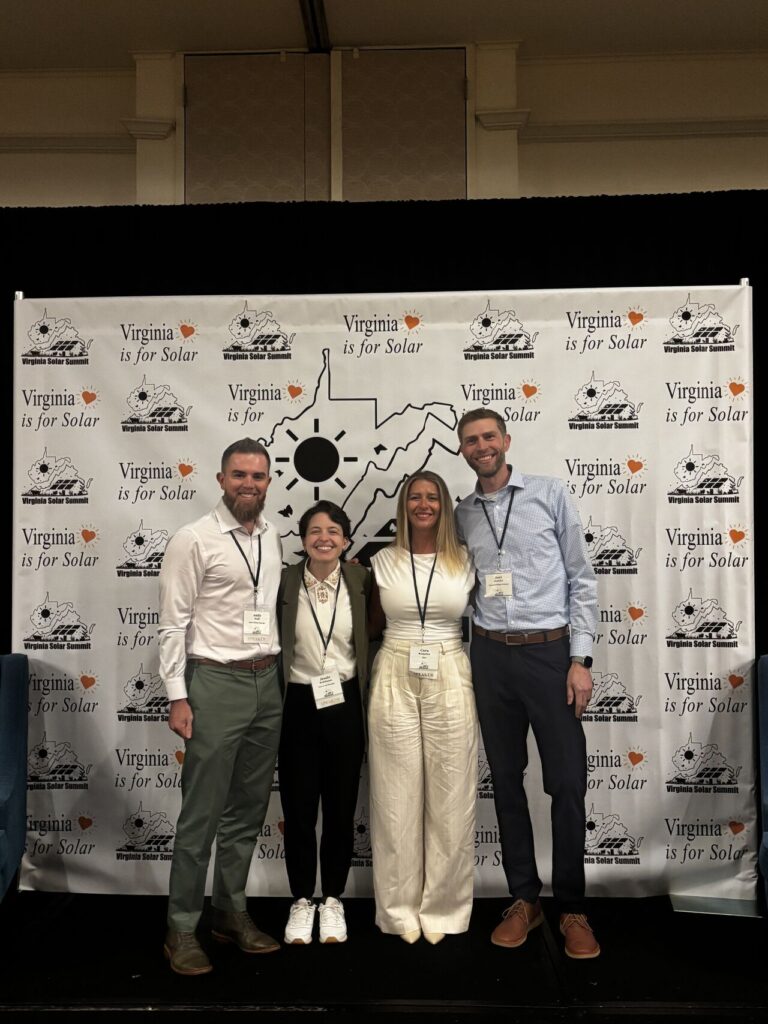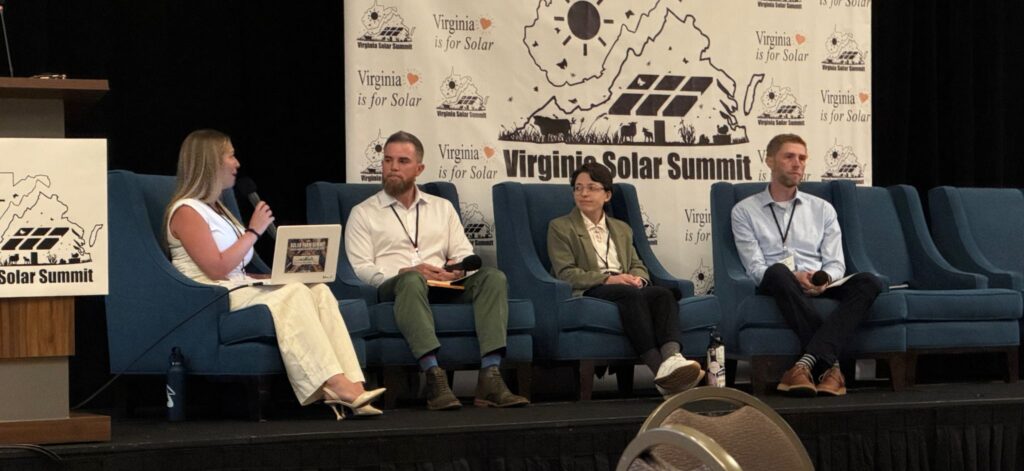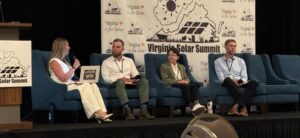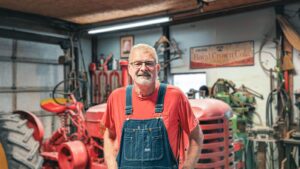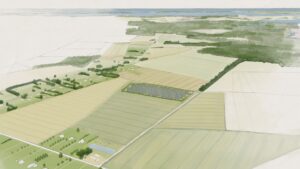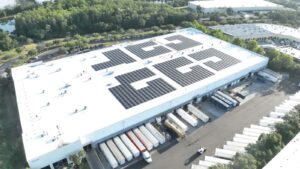Virginia solar permitting continues to be one of the most critical challenges facing our industry today. The Virginia Solar Summit is an annual touchstone for our industry stakeholders in the region, bringing together a diverse array of partners to discuss the opportunities and challenges shaping the Commonwealth’s energy future. This year, I found myself moderating a panel titled “Local Distributed Permitting: Lessons Learned from the Field.”
Local permitting is a conversation that cuts straight to the heart of our industry’s biggest challenge, and I was honored to feature the insight of industry leaders Andrew Hull of Apex Clean Energy, Joel Malefyt of Summit Ridge Energy, and Jessie Robinson of New Leaf Energy, exploring the increasingly complex and often inconsistent nature of local permitting.
We opened the discussion with a look at the big picture: the recent push for state-level solar siting reform, which, while unsuccessful in the legislature, has sparked vital conversations about balancing local control with statewide energy reliability.
From there, we zoomed in on real-world project challenges, from overly restrictive zoning conditions leading to construction blockers and delays, to political opposition and the need for early, authentic community engagement.
Moderating this discussion gave me a front-row seat to the messy realities that don’t make it into polished case studies. The conversation revealed patterns I see across Virginia every day and some solutions that are working better than others.
The Reality of Virginia Solar Permitting Challenges
There are some real-world challenges that keep nearly every project developer up at night: overly restrictive zoning conditions that create construction blockers and delays, political opposition that can emerge unexpectedly, and the critical importance of early, authentic community engagement.
With localities retaining significant authority over solar siting and no broad state-level reforms this session, efforts to address restrictive local ordinances continue at the grassroots level.
What became clear throughout our conversation is that success is all about understanding the human dynamics at play in every community we enter.
Here’s an example that fundamentally changed how I approach community engagement. Last year, we had a community solar project that looked perfect on paper.
The technical design was solid, the economics worked, and we had all our permits lined up. But we failed to assess the level of anti-solar sentiment in the community before we even got there.
When we showed up to the public hearing, we discovered that a neighbor who ran a popular social media page had filled the room with anti-solar advocates from out of town.
We were completely caught off guard, deep in the permitting process, facing organized opposition we never saw coming.
That failure taught us we need to be way more proactive about getting to know our neighbors and building meaningful relationships before we’re standing in front of a planning commission. We’ve learned a lot since then.
Our presentations and visual aids have gotten significantly better and are now some of the best in the industry, rivaling nearly any permitting applicant for any type of development. Our watercolor illustrations, slide decks, and 3D renders have proven incredibly useful for addressing concerns and easing fears about what a project will actually look like. Over time, we’ve refined these visual tools based on lessons learned—and together, they’ve become key success strategies that have helped us secure 13 out of 15 land use permits in Virginia.
There will always be pushback, but we’re getting better at anticipating it and will continue to improve and refine our approach. We’ve expanded the many things we do that work: regular check-ins with community members, building genuine relationships over time, and giving back to the community through impact grants to local nonprofits.
Success isn’t just about meeting technical requirements; it’s about building trust, staying flexible, and learning from every project, win or lose.
What We’re Really Building
One panelist described walking a project site with a county supervisor who initially opposed the development. By the end of the visit, he wasn’t asking about setbacks or screening requirements. He was asking how his constituents could subscribe to the community solar program.
We’re not just building solar farms. We’re building trust.
I’ve seen this pattern repeatedly across Virginia. Counties that seemed impossible to work with become collaborative partners once they understand we’re committed to their success, not just our own. It’s why I now spend as much time in stakeholder living rooms and town halls as I do in engineering meetings.
We shared lessons learned from both denied and approved projects, including how to adjust design, messaging, and strategy to better align with local priorities. We also explored the role of shared and community solar in Virginia’s energy future, and how developers can work together to move the needle on permitting reform.
Where Virginia Goes Next
The Summit’s broader discussions reinforced what our panel revealed: Virginia is at a turning point. The conversations happening in Richmond about solar siting will define what kind of energy future we want to build together.
I left the conference convinced that Virginia’s solar industry will succeed not because we perfect our technical approach, but because we perfect our human approach.
The counties embracing solar aren’t doing it for abstract environmental goals. They’re doing it because they see concrete benefits flowing to their communities: tax revenue, affordable energy options, and economic development opportunities that align with their values.
The path forward requires us to stop thinking like developers who happen to work in communities and start thinking like community partners who happen to develop solar.
That means showing up early, listening carefully, and designing projects that solve local problems, not just energy problems.
When I look at the relationships we’ve built and the projects bringing cost-effective energy directly to Virginia families, I see a community-driven blueprint for transformation.
The Virginia Solar Summit reminded me why I love this work. By building new energy infrastructure we are building energy independence, one community partnership at a time.
Huge thanks to Andrew Hull, Jessie Robinson, and Joel Malefyt for a truly meaningful conversation, and to Dan French and Katie Meyer for the opportunity to moderate and for hosting such a collaborative conference. I’m so excited to be a part of Virginia’s energy future.
